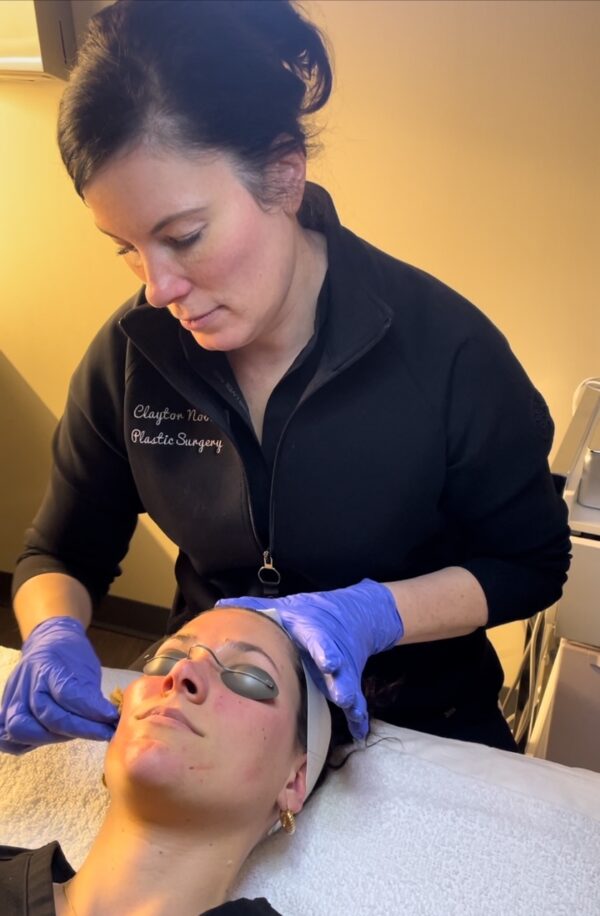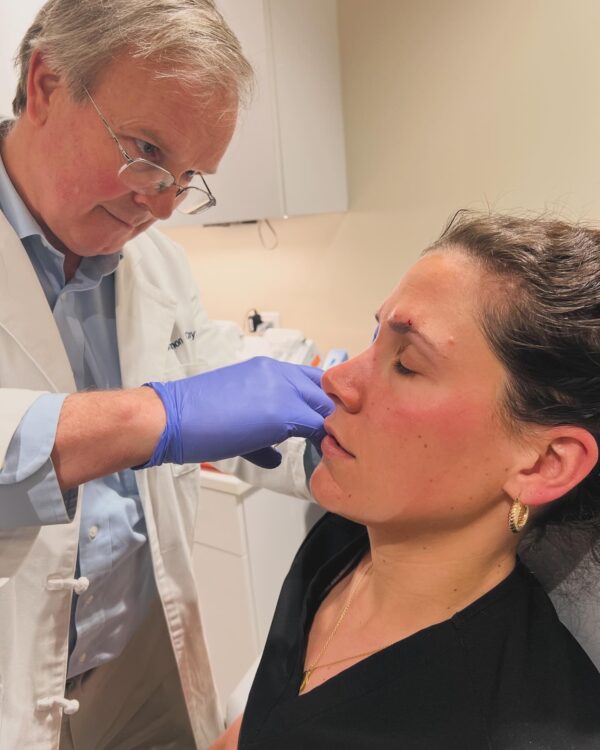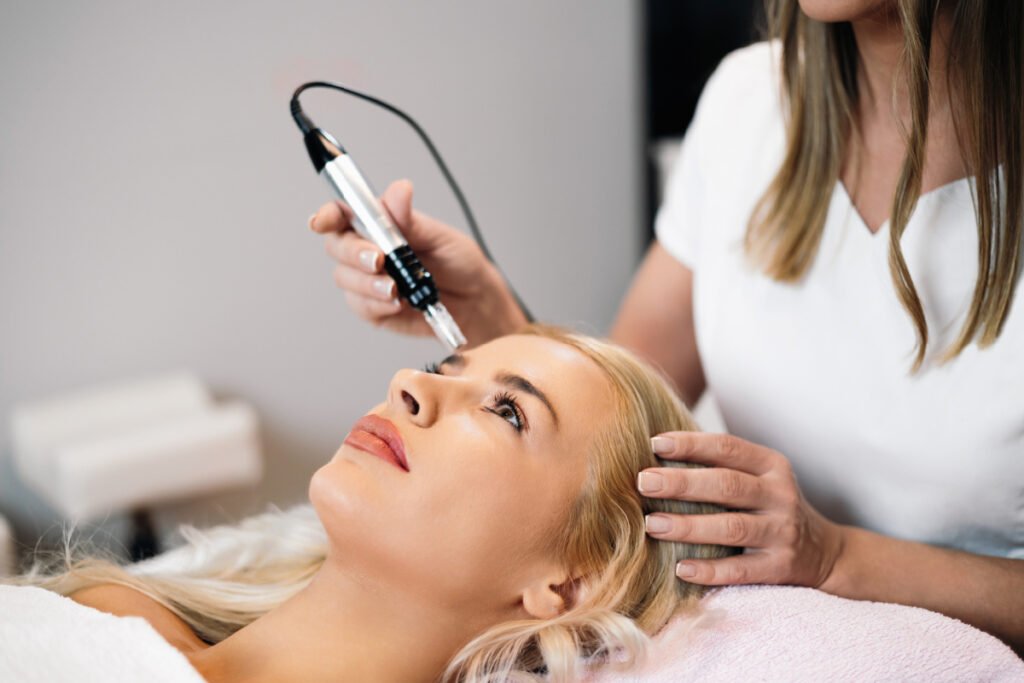
Aesthetic medicine constantly evolves, and new treatment and product innovation is essential. That’s why the expert aesthetics team at our Philadelphia plastic surgery practice is committed to advancing patient care and outcomes with the latest techniques and technologies.
One such breakthrough we’re excited to share with our patients is Morpheus8 RF microneedling. Dr. R. Brannon Claytor has conducted award-winning microneedling research, and in this blog, he explains the differences between Morpheus8 and traditional microneedling.
Traditional microneedling
Traditional microneedling uses a needle-tipped device to create thousands of tiny, controlled micro-injuries on the skin’s surface. These micro-injuries stimulate the body’s natural wound-healing process by boosting collagen and elastin production—two essential proteins to maintain the structure and elasticity of the skin.
As the skin heals and new collagen and elastin layers develop, the skin becomes smoother, firmer, and more youthful-looking. Traditional microneedling is widely used to address several skin concerns, including fine lines, wrinkles, scarring, mild skin laxity, and overall skin texture.
This technique is part of a novel treatment Dr. Claytor pioneered, LaMiNa (Laser + Microneedling + Nanofat), to significantly enhance facial rejuvenation outcomes. This unique treatment combination utilizes proven skin renewal methods to synergistically improve treatment results.
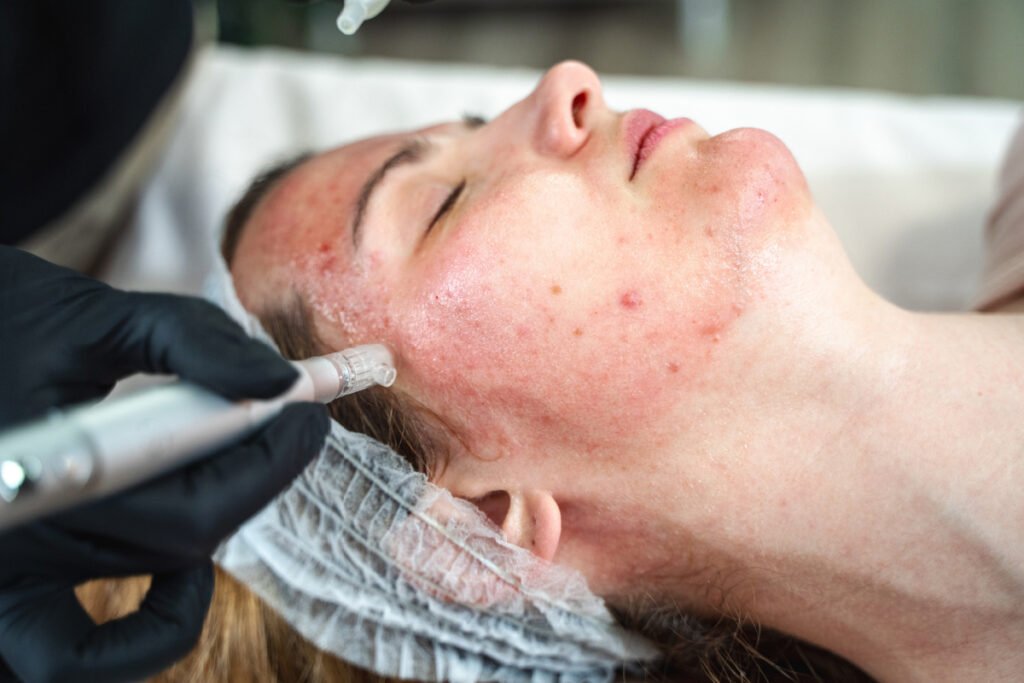
Morpheus8 RF microneedling
Morpheus8 is an advanced microneedling technique that integrates radiofrequency (RF) energy.
During a Morpheus8 treatment, the same micro-punctures are created as traditional microneedling, but the needles also deliver RF energy deep into the dermis. This energy heats the underlying layers of skin to create controlled damage that amplifies your body’s natural healing response. The heat from the RF energy also immediately contracts collagen fibers, which creates an immediate skin-tightening effect. Over time, the stimulated production of new collagen and elastin further improves the skin’s appearance.
Controlled RF energy enhances collagen and elastic production while tightening the skin for more comprehensive skin rejuvenation.
Key differences
Traditional microneedling and Morpheus8 RF microneedling are both highly effective in rejuvenating the skin, but there are some notable differences in their modalities and levels of results.
- Treatment depth: Morpheus8 RF microneedling penetrates deeper into the skin compared to traditional microneedling to target the underlying layers of tissue for more significant improvement in skin concerns.
- Collagen & elastin stimulation: Both methods stimulate collagen, but Morpheus8 RF microneedling typically produces quicker and more dramatic improvements because the thermal energy enhances the process.
- Versatility: Morpheus8 RF microneedling’s advanced approach also makes it preferable for treating more complex and severe skin issues, such as deep wrinkles, significant scarring, and cellulite, which would typically require a longer treatment series using traditional microneedling to achieve the same level of improvement.
- Downtime: Recovery from both procedures is generally minimal. Redness and swelling (similar to a mild sunburn) are common and short-lived with either treatment; however, there may be slightly more redness and swelling following Morpheus8 RF microneedling due to the deeper penetration and heat involved.
Is one treatment better than the other?
Both treatments have their merits. Traditional microneedling is superb for improving skin texture issues such as scars, fine lines, and enlarged pores. Morpheus8 RF microneedling, on the other hand, is the treatment of choice for deeper skin concerns and more significant skin tightening and contouring. The best way to determine which treatment would provide optimal benefits for your skin is to schedule a consultation with a skin rejuvenation expert who is highly experienced in both treatments and thoroughly understands the skin’s anatomy and physiology.
At Claytor Noone Plastic Surgery, microneedling treatments are performed by nationally-recognized, double board-certified plastic surgeon Dr. Brannon Claytor; our Physician Assistant, Julie Holesh; and our medical esthetician. This is a tremendous advantage for patients in Bryn Mawr, Main Line, and surrounding Philadelphia areas seeking facial rejuvenation options, as many practices and medical spas employ less qualified providers to perform these non-surgical med spa services.
Are Morpheus8 RF microneedling and traditional microneedling safe?
Absolutely. Both the RF microneedling technique and traditional microneedling technique have been proven safe, with few, if any, adverse side effects when performed by a trained professional. Part of your consultation involves thoroughly examining your skin’s condition and tone to ensure you can safely receive either treatment. Many patients are good candidates for microneedling; however, if you have a deeper skin tone, active acne or skin rashes, or have a metal allergy, we will provide alternative treatments to help achieve your skincare goals.
Dr. R. Brannon Claytor
Dr. Claytor is board certified by the American Board of Plastic Surgery and holds over 20 years of experience as a cosmetic plastic surgeon. An innovator and teacher in the field of plastic surgery, he uses advanced techniques like the drain-free tummy tuck and deep plane facelift to streamline recovery and provide natural-looking, durable results.
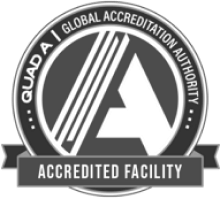
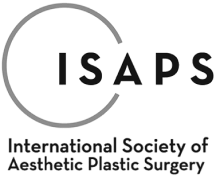
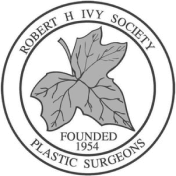
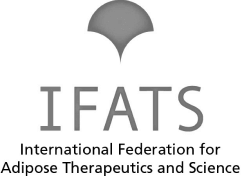
Our priority is ensuring you receive the best outcome, and we are committed to patient safety, satisfaction, and quality of care. Our medical spa and plastic surgery practice offers the most advanced surgical and non-surgical options to enhance your natural appearance. If you are interested in Morpheus8 RF microneedling, we invite you to schedule a consultation with our experienced medical providers by calling Claytor Noone Plastic Surgery at (610) 527-4833, or filling out our contact form to receive a call from us.
Areas Served:
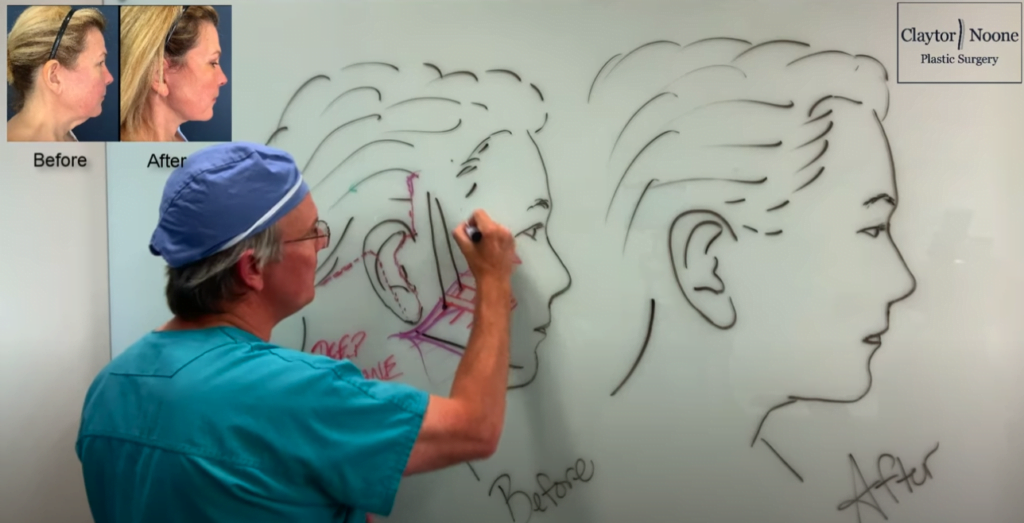
If you want to restore a youthful appearance in the face, a deep plane facelift generates a stunning improvement. The “after” photos reveal sweeping jawlines, youthfully high cheekbones—all completely natural-looking. But the first question that every Philadelphia patient asks is this: what’s the difference between a deep plane facelift and a SMAS (traditional) facelift?
Keep reading to learn what sets the deep plane technique apart, and watch the video below for Dr. Claytor’s demonstration with visuals!
Philadelphia plastic surgeon Dr. Brannon Claytor explains how the deep plane facelift technique differs from the more common SMAS plication facelift.
SMAS plication facelift
The most common type of surgical facelift, an SMAS plication facelift works on a shallower layer of tissues than the deep plane facelift. The SMAS is the superficial musculoaponeurotic system below the skin in your mid-to-lower face. “Plication” is the term for a surgical tightening of tissues, which usually involves lifting, removing excess, and rejoining remaining tissues. In a SMAS plication facelift, the SMAS layer is lifted vertically and re-anchored in front of the ears to create a lift of about 1 cm. Some surgeons may also lift from further down into the cheek, at the front of the earlobe, for expanded effects. Still, even an expanded SMAS facelift procedure cannot compare with the more comprehensive improvements offered by a deep plane facelift.
Deep plane facelift, step by step
A deep plane facelift leaves the SMAS intact, instead requiring your surgeon to access deeper attachments in the cheeks and lower face to raise and tighten tissues. Here are three major steps in the surgery:
1. Incisions are made within the hairline and in the natural folds of the ear.
A deep plane facelift is performed through discreet incisions placed in the sideburn area, within the folds of the ear, and along the hairline behind the ear at the back of the neck.
Not infrequently, Dr. Claytor will also create an incision within the hairline above the ears (just behind the temple); this allows him to lift the SMAS of the face at another important vertical axis, which may be more beneficial for certain patients.
2. The SMAS is separated, retaining ligaments are released, and the tissue is anchored higher for a defined cheek and firmer jowl area
SMAS is surgically separated from underlying tissues to allow Dr. Claytor to reach the retaining ligaments. These ligaments have a strong hold on the tissues of the cheek and lower face, keeping tissues in position. Thus, Dr. Claytor releases them in order to be able to lift the skin, fat, and SMAS higher on the facial bone structure. The skin is sutured gradually in the newly raised position, and anchored above the ear.
Ligament release is the primary step that makes the deep plane facelift so different from the SMAS technique: it allows for more impactful, dramatic results because the cheek’s youthful, high shape—a.k.a. the malar eminence—can be more fully restored, resulting in a stunning, youthful sweep in the mid-face.
3. Neck bands are released and anchored higher for a chiseled jawline.
In the neck, rather than SMAS, you have the platysmal muscles located below the ear, beneath the mandible, and toward the front of the neck. These muscles form the tight, vertical lines you see at the front of your neck when you clench your jaw (they don’t affect how you move your head).
To create a sweeping, more youthful jawline appearance, the platysma is released along the jawline, allowing Dr. Claytor to anchor these muscles behind the ear. This can create a chiseled mandible or jawline, as you can see in this before and after photo:
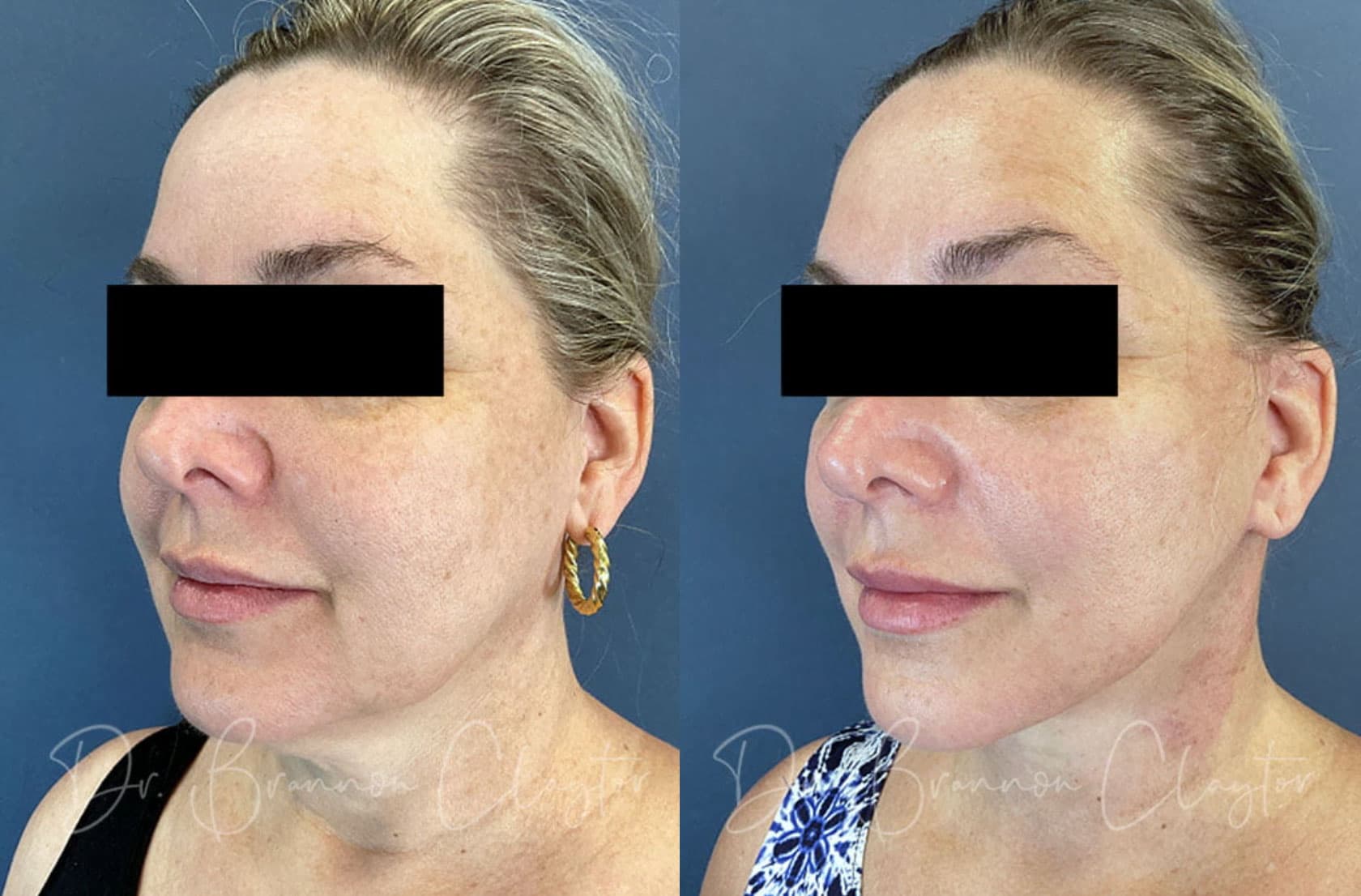
The importance of an experienced, expert deep plane facelift surgeon
A deep plane facelift works on the same layer of tissues where your facial nerves lie. Nerves spread from below and behind the ear, out into the cheeks, jawline, and below the eye area. The nerves that thread throughout the facial ligaments are released in a deep plane facelift, so it’s critically important that your surgeon is well-versed in this anatomy and in techniques for maintaining the integrity of facial nerves. Once a surgeon dissects below the SMAS layer of the face, they must identify and very delicately operate around the nerves.
Do not settle when it comes to choosing a board-certified plastic surgeon: avoid surgeons who offer below-average pricing, or who don’t have the before and afters, reviews, plastic surgery credentials, and reputation that prove they can safely achieve excellent facelift results. Dr. R. Brannon Claytor teaches his deep plane facelift technique at national meetings of plastic surgeons, and is widely considered to be a deep plane expert.
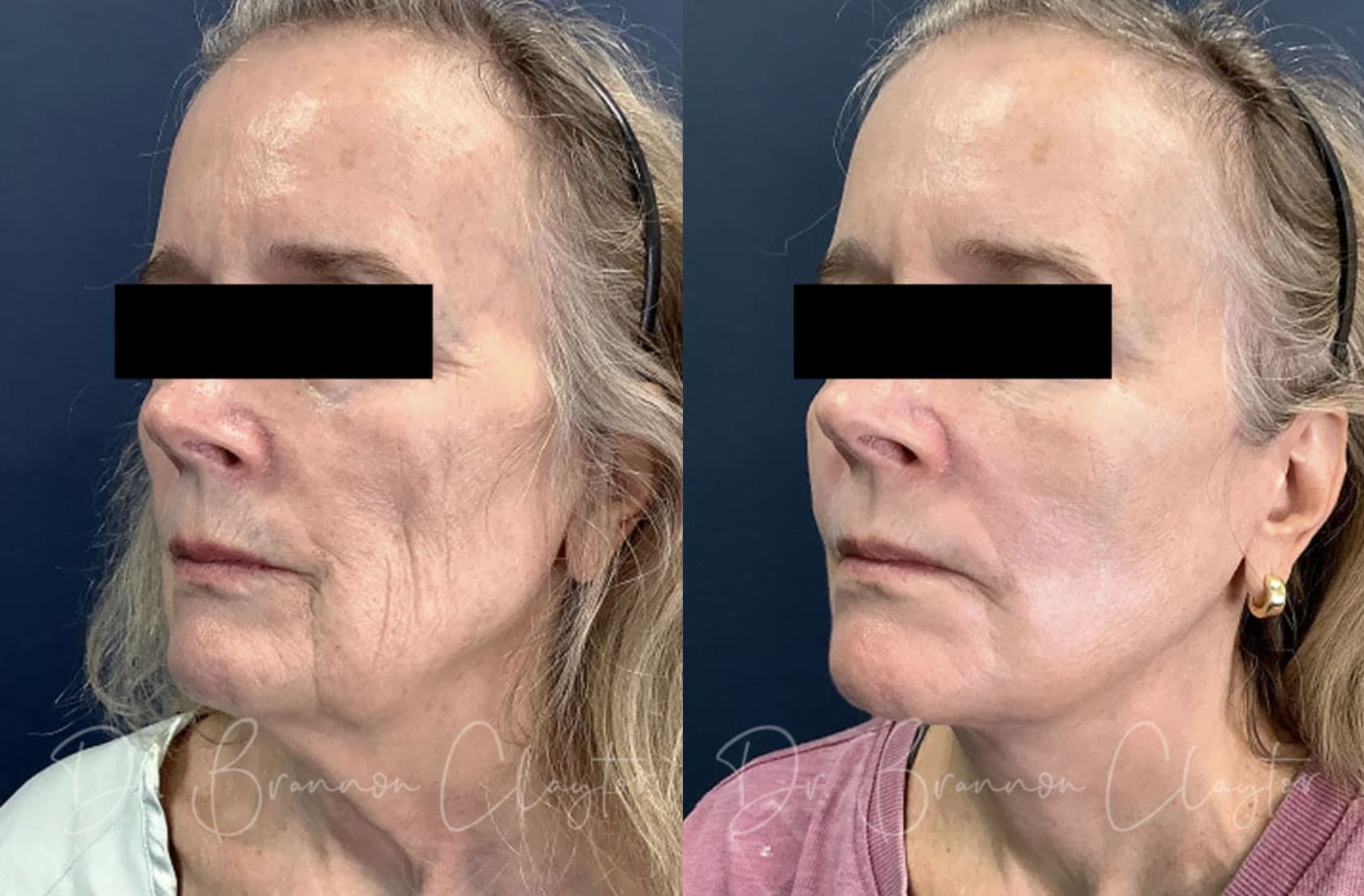
“The whole experience was fantastic! The results exceeded my expectations! I look and feel 10 years younger. Dr. Claytor and his staff made me feel so at ease and comforting. He is an excellent surgeon with a wonderful bedside manner and personality. It is one of the best decisions I ever made. I would highly recommend Dr. Claytor; in fact my neighbor has an appointment with him next month.”
Should I consider a deep plane facelift?
Patients who are good candidates for deep plane facelifts often come to us with loose skin that has succumbed to gravity, including forming jowls (loose skin around the jawline and chin) and sagging in the neck. As we age, we experience facial descent: our cheek structure (malar eminence is the technical term) involutes, and what we start to see is downward descent of our face—creating jowling, and excess neck skin and fat.
A good candidate for this procedure is looking to return to a more sculpted jawline and reduced wrinkles. Dr. Claytor’s goal is to help you look like the best version of yourself: We’re not here to make you look like someone else!
If you’re ready to experience these rejuvenating results yourself, we’d love to meet with you to discuss options! Dr. Claytor serves patients from all over the Bryn Mawr, Main Line, & Philadelphia areas. Call 610.527.4833 or contact our Philadelphia plastic surgery practice online to schedule your personal consultation with Dr. Claytor today.
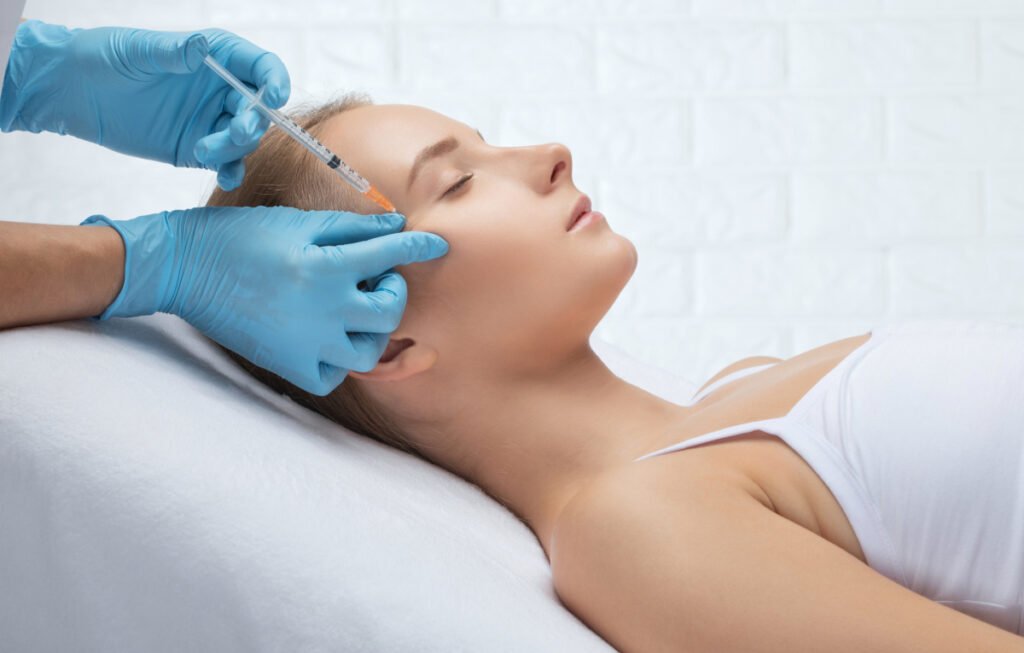
As one of the first Philadelphia practices that was selected to offer Daxxify™ ahead of its official launch last year, we’re excited to share our early knowledge of Daxxify (or “Daxi”) cost and its effectiveness for our Bryn Mawr and Main Line patients.
Revance Aesthetics, the maker of Daxxify (DaxibotulinumtoxinA-lanm), received FDA approval for the product in 2022, specifically for treating glabellar lines (frown lines between the eyebrows) for a smoother, more youthful brow appearance. With a slightly lower cost per unit than Botox®, as well as the promise of longer-lasting effects, many wonder if Daxxify is a more affordable alternative to Botox. But when you also consider the greater number of units needed to achieve satisfactory results, does Daxxify still end up being more cost-effective?
Here, double board-certified plastic surgeon Dr. Brannon Claytor and Physician Assistant and expert injector, Julie Holesh, dive into the cost-effectiveness of these two top neuromodulators.
- How much is Daxxify?
- Botox vs. Daxxify cost
- Is Daxi better than Botox?
- How long does each neurotoxin last?
- Other ways we can compare Botox and Daxi
- Is Daxxify a good Botox alternative?
How much is Daxxify?
The total cost of Daxxify and other neuromodulators such as Botox®, Xeomin®, Dysport®, and Jeuveau® is determined by the price per unit and the number of units needed to achieve optimal results.
Daxxify price per unit
Daxxify costs $12 per unit, and the price of Daxi is set by the manufacturer.
It’s important to note that pricing will not significantly vary between qualified providers; overly discounted pricing can be indicative of an injector’s lack of experience or the use of an over-diluted or counterfeit product.
Botox vs. Daxxify cost
Units needed for effective treatment are not uniform across injectable neurotoxins; FDA-approved product labels recommend different dosages based on each product’s unique formula.
Treatment cost with Daxi
The FDA recommends using about 40 units of Daxi to treat glabellar lines (vertical lines between the eyebrows) for most patients.
- $12 per unit x 40 units = $480
- Daxxify approximate annual cost = $960
Treatment cost with Botox
Most patients require approximately 20 units of Botox to treat glabellar lines. The total treatment cost at Claytor Noone Plastic Surgery’s med spa varies slightly between our providers.
- Botox with Dr. Claytor: $15 per unit x 20 units = $300
- Botox with Julie Holesh, PA: $13 per unit x 20 units = $260
- Botox approximate annual cost = $1,000-1,200
So, which neurotoxin actually costs less?
This pricing information can give you a sense of the fact that Daxi will indeed cost more per treatment because of the higher number of units required. However, because Daxxify lasts longer for most patients, maintaining results will cost somewhat less over the course of time. Additionally, treatment with Daxi means you’ll need half as many appointments—a boon for busy patients in the Bryn Mawr and Main Line Philadelphia areas who know their “time is money.”
Also, it should be noted that while we are comparing glabellar line treatment cost as a basis here, Botox-type injectables are not a one-size-fits-all treatment, and surrounding muscles should also be targeted for balanced, natural looking results that enhance your features and diminish flaws. As such, a comprehensive forehead Botox treatment may require 30 to 40 units or more (or approximately double that if using Daxi), with units distributed throughout the forehead and eye area.
Is Daxi better than Botox?
Daxi may be a better choice for some patients, especially those who find making time for injectable appointments difficult, or anyone who has developed Botox resistance.
In this video, Dr. Claytor and Physician’s Assistant and expert injector, Julie Holesh, explain how neuromodulators work and the differences in Daxi’s unique formulation.
How long does each neurotoxin last?
How long its effects last sets Daxi apart from Botox and other neuromodulators. Daxi results have a median duration of about 6 months, with some patients experiencing its anti-aging effects for up to 9 months. This means that many patients may experience pleasing results with Daxi for twice as long compared to its competitors and thus need touch-up injections less often.
The longevity of Daxi’s results is credited to its unique formulation. Using Peptide Exchange Technology™ (PXT), the toxin that blocks nerve signals is attached to a novel protein that takes the body longer to break down and extends Daxi’s anti-aging effects.
In contrast, for most patients, Botox typically lasts between 3-4 months.


Other ways we can compare Botox and Daxi
For some patients, a trusted product that has been safely used over a long time period may be of primary importance. In this case, Botox is king: Botox Cosmetic’s predictable results and strong safety profile quickly made it a household name after its debut in 2002, and it has long since been trusted by professionals and patients alike. Furthermore, prior to its official FDA approval for cosmetic use, Botox had long been used for other therapeutic purposes—in fact, it has a 50+ year history of safe use in medicine.
One other nuance to consider: some patients may choose Daxxify over other injectables as it contains no human or animal by-products. We expect Daxi to gain popularity with patients seeking a “cleaner,” vegan neurotoxin.
That said, because the two products have so much in common, there are no other significant arguments that would indicate the use of one over the other.
Both Daxi and Botox:
- Use a purified botulinum toxin to temporarily block nerve signals to treated muscles;
- Once injected, relax targeted muscles, leading wrinkles caused by muscle contractions to be softened or erased;
- When administered by a highly-experienced injector with a keen eye for aesthetics and comprehensive understanding of underlying facial musculature, can achieve outstanding and natural-looking anti-aging results.
Is Daxxify a good Botox alternative?
Yes, especially if you have Botox resistance. In clinical trials, only about 1.5% of patients experienced Botox resistance—when the body either builds up antibodies against the neurotoxin or metabolizes it much faster than expected. Patients with Botox resistance may only experience brief anti-aging effects or see no reduction in wrinkles at all. Our medspa patients who do not get strong results from Botox are showing excellent results from Daxxify.
If you are new to neuromodulators, we may recommend starting with Botox to be sure you are happy with your appearance after neurotoxin injections. This is because, in the unlikely event that you are not pleased with your results, or simply wish to adjust treatment, the effects of Botox will diminish faster. For patients who are experienced with Botox-type injections and are ready to try a longer-lasting product, Daxi is an excellent alternative.
Daxxify injections in Bryn Mawr and Main Line, PhiladelphiaIf you are interested in Daxi or other neuromodulators, we invite you to consult with Philadelphia double board-certified plastic surgeon Dr. Brannon Claytor or aesthetic injector Julie Holesh at Claytor Noone Plastic Surgery. Our medical spa treatments are the premier choice in the Main Line and Bryn Mawr areas for achieving natural-looking neurotoxin results. We also offer dermal fillers such as Juvéderm® and Restylane® and advanced laser treatments for complete facial rejuvenation results.
Dr. Claytor has been designated one of Philadelphia Magazine’s Top Doctors from 2021 – 2024, a Main Line Today Top Doctor from 2017-2025, and one of “America’s Best Plastic Surgeons” by Newsweek. To schedule your consultation, please call our practice at 610.527.4833 or request more information about our services online.
Areas Served:

When it comes to plastic surgery, scars are a fact of life! That’s why we embrace conversations about them. Starting with your initial consultation with Philadelphia plastic surgeon Dr. Brannon Claytor, you will learn about the ways we tailor care to achieve beautiful results—and a big part of that will be where we place your incisions, plus the after-care steps we will take to help your scars heal beautifully.
Below, learn about the scar healing process and what Dr. Claytor recommends for minimizing their appearance to maximize your results.
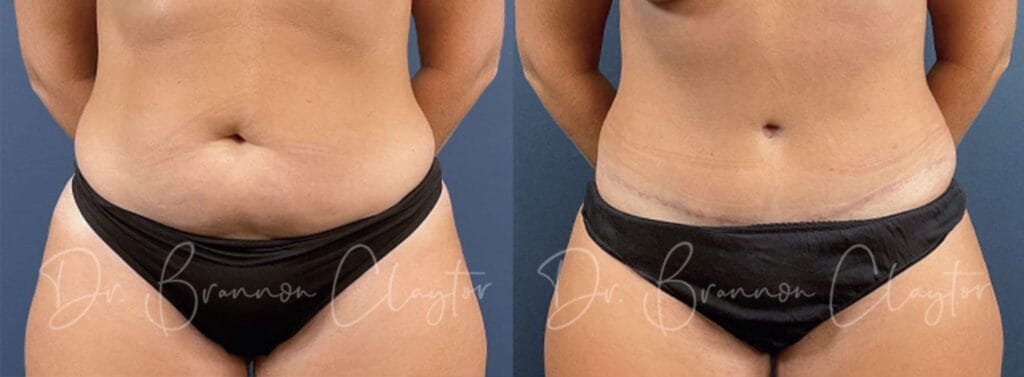
How fast do surgical scars heal?
Scars from plastic surgeries like tummy tuck or facelift continue to diminish in appearance for a full two years, but, importantly, scar tissue takes about 3 months to regain its strength. Furthermore, scars are only about halfway to their ultimate strength level at 6 weeks after surgery; this is when most patients are allowed to resume many activities and when we will likely clear you to get back to your routine, especially if you live a relatively sedentary lifestyle.
While it feels great to get back to normal life, understand that anything more than occasional light stress on your scars at this time could widen them, so, until they reach their full strength after about 3 months, it’s best to avoid any activity that might strain your healing tissues.
Scar maturation can vary based on the procedure, incision placement, and your unique anatomy, so be sure to ask your doctor specific questions you have about what you can and can’t safely do. For example, a facial procedure such as an eyelid lift will have a faster healing time and less restrictions than a body lifting procedure.
How to help your scar heal to near invisibility
The appearance of your scars have two components: elevation and color, or pigmentation. Achieving the most beautiful results with ultra-fine, near-invisible scars requires several methods to help the scars to heal both flat and as close to your natural skin color as possible. In addition to following your plastic surgeon’s advice for physical activity limits, you can help your scars heal with a few proven methods:
Choose a surgeon who uses carefully-placed incisions
Board-certified plastic surgeons are extensively trained and experienced in surgical methods that lead to aesthetically pleasing outcomes, and scar placement is a key part of this. Plastic surgeons should place incisions in areas where the least natural tension will be placed on the healing scar, helping it to heal normally.
Incorporate a scar gel
A scar gel such as Strataderm™, which we sell in our office, or Mederma, which is available OTC at pharmacies, can be applied routinely to help minimize the appearance of scars.
Prevent hyperpigmented scars with sun protection
It’s critical to protect healing scars from sun exposure, which darkens them: pigment develops during sun exposure as the body’s reaction to protect itself from the ultraviolet (UV) rays.
Use sunscreen, hats, umbrellas, and clothing to protect healing incisions (avoid relying on sunscreen alone). In addition, you may want to consider wearing white, yellow, cream, or other light-colored bathing suits and clothing that deflect the UV light away, as dark colors like black and brown pull the light in.
Practice scar massage if instructed by your surgeon
Some plastic surgeons may recommend that certain patients practice scar massage once their scar reaches a certain point in maturity. When scar massage is called for—and each patient should ask their doctor if scar massage is appropriate for them—it can help to break up hard, raised scar tissue.
Treat early post-surgical scars with microneedling
In addition to the above measures, Dr. Claytor uses either microneedling or Morpheus8 RF microneedling to induce collagen remodeling, helping to improve scars’ appearance by making them flatter and less visible.
Previously, most surgeons believed that it was necessary to wait a full year after surgery before using microneedling to improve surgical scars’ appearance. But Dr. Claytor recently published a study in the journal Plastic And Reconstructive Surgery which found that patients who started a microneedling regimen earlier—as early as 6 weeks after surgery, once the initial healing process was complete—saw significant scar improvement at the four-month mark.
As a surgeon who is well-known for his natural-looking deep plane facelift results, Dr. Claytor is constantly working to improve methods to minimize scar appearance and promote quicker scar maturation. While scars are placed inconspicuously, scar care is still critical to achieving the finest possible scars.
Dr. Claytor’s study found that patients who started a microneedling just 6 weeks after surgery saw significant scar improvement at the four-month mark.
Scar revision surgery
In more severe cases where a scar has healed irregularly, you may decide to consult with a board-certified plastic surgeon about scar revision surgery. Revision surgery is not usually able to create a scar-free result, but a skilled surgeon may be able to improve the scar’s appearance by removing scar tissue and carefully suturing the new incision with techniques to help create a fine scar that heals to be barely perceptible. Of course, it is also key to incorporate scar care during recovery from scar revision surgery.
About Philadelphia plastic surgeon Dr. Brannon ClaytorDr. Claytor is a board-certified plastic surgeon with many years of plastic surgery experience. He has published numerous articles over his career to advance the science and artistry of aesthetic medicine, and he is committed to helping patients see their dream results safely. Dr. Claytor and the outstanding medical team at the Claytor Noone Plastic Surgery invite you to call our office at 610.527.4833 or contact us online to schedule a consultation today!
Areas Served:

Cesarean sections, commonly called C-sections, currently make up 21% of all US births. C-sections are performed for many reasons and are responsible for saving the lives of countless mothers and babies, but they require recovery time and, since they involve the same area of the body, women often wonder how long it will be before it is safe to have tummy tuck surgery to restore their pre-pregnancy body.
In this post, nationally-recognized tummy tuck specialist Dr. R. Brannon Claytor discusses how long you should wait to have a tummy tuck after your C-section, and why.
What are the benefits of getting a tummy tuck after a C-section?
Because of the incisions made to deliver a baby during a C-section, mothers are left with a large scar running either horizontally or vertically across their lower stomach after giving birth. To address this scar and other physical post-pregnancy changes, many women choose to have tummy tuck surgery, also called abdominoplasty. Following a C-section, tummy tuck surgery can:
- Lessen the C-section scar and scar tissue
- Flatten the tummy by tightening underlying muscles and removing excess fat
- Remove any excess skin and the “skin shelf” that sits above the scar
- Re-create or even enhance the pre-pregnancy figure
- Get rid of abdominal stretch marks
- Change your belly button from an ”outie” to an “innie” or otherwise improve its appearance
- Repair diastasis recti
- Contour the waist
The main reason women undergo tummy tuck surgery following their C-section, however, is to regain their sense of identity and confidence. Pregnancy takes a serious toll on a woman’s body and mind, and restoring her to her former (or enhanced) figure can help her feel more like herself again. We also often help women restore their confidence this way by including a tummy tuck as part of a full mommy makeover—a customized set of procedures, such as breast surgery, tummy tuck, and liposuction—that restores your pre-pregnancy shape.
The main reason women undergo tummy tuck surgery following their C-section, however, is to regain their sense of identity and confidence. Pregnancy takes a serious toll on a woman’s body and mind, and restoring her to her former (or enhanced) figure can help her feel more like herself again.
Why do I need to wait to have a C-section after giving birth?
For you and your baby, it’s best to wait at least six to 12 months after giving birth to have your tummy tuck. We know this can be difficult if you want to address your C-section scar, loose skin, and extra weight right away, but many moms appreciate waiting for these reasons:
- Your body is healing and going through changes: You’ll need time to heal after pregnancy. Giving birth is physically, emotionally, and mentally taxing! After pregnancy, your body is coping with many postpartum transitions, such as hormonal rebalancing and breast size changes.
- Bonding is important: The first few months following childbirth are critical for mother-child bonding, and waiting for at least six months after giving birth to have your tummy tuck allows you to enjoy this time with your newborn, uninterrupted by an additional surgical recovery.
- You need time to plan: Initial recovery from a tummy tuck takes about two weeks, and you’ll want to make sure that you have time to organize, prepare, and line up the help you’ll need during that period so you can focus on healing.
- You won’t be able to lift your child during recovery: This is not the time to be lifting your child and caring for him or her on your own. If you’re tempted to do so too soon after your tummy tuck, you might accidentally strain your incisions, delay your healing process, or otherwise compromise your results.
For more suggestions on recovering from plastic surgery, we invite you to read our Mommy Makeover post.
Can I combine my tummy tuck with my C-section?
Most doctors strongly advise against combining a tummy tuck with a C-section, as your uterus is still undergoing dramatic size changes in the weeks after childbirth. Additionally, a different anesthesia type is usually used during a C-section versus a tummy tuck (this is because a C-section plan must consider childbirth safety while tummy tuck anesthesia is purely about your comfort). Lastly, your plastic surgeon will be able to recommend a more ideal tummy tuck plan when they can see how much your abdomen has “bounced back” (or not) after carrying your child. All that said, getting a tummy tuck after a C-section is perfectly safe—you just need to give yourself some time.
Will I need drains after my tummy tuck?
While it is standard for patients to require surgical drains following a tummy tuck, Dr. Claytor is nationally renowned for his drainless, or “no drain,” tummy tuck. When performed properly by a board-certified plastic surgeon, a drainless tummy tuck allows patients to recover faster and with fewer complications.
Here’s how it works: Dr. Claytor is able to maintain your Scarpa’s fascia (deep connective tissue within your abdominal wall) during surgery, which acts as a natural drainage system for your lymphatic system. This means you won’t have to deal with the hassle of emptying fluids from your drains post-surgery, and because your blood supply is improved and tissue damage is reduced, you’ll heal much faster than a traditional tummy tuck.

Is a drainless tummy tuck safe?
Traditional tummy tucks remove the lymphatic drainage from the abdomen, necessitating the use of drains. Dr. Claytor’s approach to maintaining your Scarpa’s fascia and lymphatic system is much safer and more natural. His advanced drainless tummy tuck technique has a post-surgical fluid collection rate less than that of patients who use drains, therefore his patients have a much lower rate of developing seromas. Dr. Claytor has been performing drainless tummy tucks with exceptional results for over 10 years in our Quad-A-accredited surgical suite.
I’m ready to schedule my tummy tuck—what are my next steps?
Congratulations on your delivery! Now that you are officially recovered from your C-section, you can begin to schedule your tummy tuck procedure. Here’s what you’ll want to do:
- Make sure you’re at a stable weight and are in overall good physical condition. This will ensure you have optimal results from your tummy tuck and will help prevent any potential complications.
- Make sure you aren’t planning on becoming pregnant again. If you do get pregnant after your tummy tuck, you can still safely bear a child, but it will compromise your results. While a secondary tummy tuck can be an option, most women prefer to wait until their family is complete.
Above all else, be sure to consult with a board-certified plastic surgeon. He or she can let you know if you are a good candidate for surgery.
Dr. R. Brannon Claytor
Dr. Claytor is board certified by the American Board of Plastic Surgery and holds over 20 years of experience as a cosmetic plastic surgeon. An innovator and teacher in the field of plastic surgery, he uses advanced techniques like the drain-free tummy tuck and deep plane facelift to streamline recovery and provide natural-looking, durable results.




Tummy tuck surgery in Philadelphia
Board-certified Philadelphia plastic surgeon, Dr. R. Brannon Claytor, has been performing tummy tucks for over 20 years. Dr. Claytor specializes in the drainless tummy tuck, which reduces the need for cumbersome and unsettling abdominal tubes. Contact Dr. Claytor online or by calling (610) 527-4833 to learn how tummy tuck surgery can restore your body after a C-section and increase your confidence.
References »
The Lancet. “Caesarean section use has almost doubled globally since 2000.” ScienceDaily. ScienceDaily, 11 October 2018. <www.sciencedaily.com/releases/2018/10/181011190654.htm>.
Areas Served:

“Filler fatigue” refers to the notion that overuse or long-term use of fillers can lead to a puffy or strangely out-of-proportion appearance—a.k.a. “pillow face.” It may also lead to a stretched, doughy look in the skin where filler has dissolved.
This concept keeps gaining traction, most recently with rumors surrounding celebrities like Ariana Grande and Kylie Jenner, who are known for their youthful looks but have faced speculation about their changing facial appearances due to alleged overuse of fillers.
Here, our double-board certified plastic surgeon Dr. Brannon Claytor, who performs many facial plastic surgeries, as well as non-surgical injectables like dermal filler, addresses these rumors and provides a professional medical perspective on how fillers impact the aging process.
What fillers are for
Dermal fillers have a gel-like consistency, and they are designed to lay beneath the skin where injected to add volume, smooth out wrinkles, or enhance facial contours. Fillers are made from substances like hyaluronic acid, which naturally occurs in the body and helps keep skin plump and hydrated. When administered correctly, this cornerstone anti-aging treatment should offer a natural-looking enhancement. However, they gradually dissolve over time—after approximately 6-18 months, depending on the formula.
The rumors of “filler fatigue” highlight the importance of professional expertise when it comes to anti-aging treatments.
Your injector’s aesthetic taste & medical judgment is key
The key to avoiding a puffy or aged appearance with filler brands such as Juvéderm, Restylane, Bellafill, or RHA fillers lies in professional judgment and moderation. When overused or improperly placed, filler may create unnatural proportions or diminish the natural facial qualities that contribute to a youthful appearance. It’s essential for injectors to understand the anatomy of the face and how to achieve balance and harmony with fillers. You also want an injector who is going to be honest with you and tell you “no” if your appreciation of the filler transformation leads you to ask for more before it is appropriate to refresh your injections.
At Claytor Noone Plastic Surgery, all injectables are performed by Main Line plastic surgeon Dr. Claytor or Physician Assistant Julie Holesh, whose advanced training in facial anatomy and physiology allows them to achieve outstanding, natural-looking outcomes while avoiding unfortunate instances of poor results that many celebrities are criticized for.
“Dr. Claytor is an amazing doctor-compassionate, kind, supportive, knowledgeable and warm. The highest rating, the 5 Star, can’t convey how great I felt being in his care with his Team. He is skillful. He inspires confidence. He knows what he is doing; great results! Highly recommend him!”
—5-star Google review
Reversing too much filler
If you have received too much filler with a hyaluronic acid-based formula, then the filler can be dissolved, to an extent, with injections of an enzyme called hyaluronidase. However, it can take many sessions of reverse injections to fully return to your “before” state, so only undergo filler with an injector you can trust to give you natural-looking results—thoroughly check their credentials, reviews and before-and-after photos beforehand.
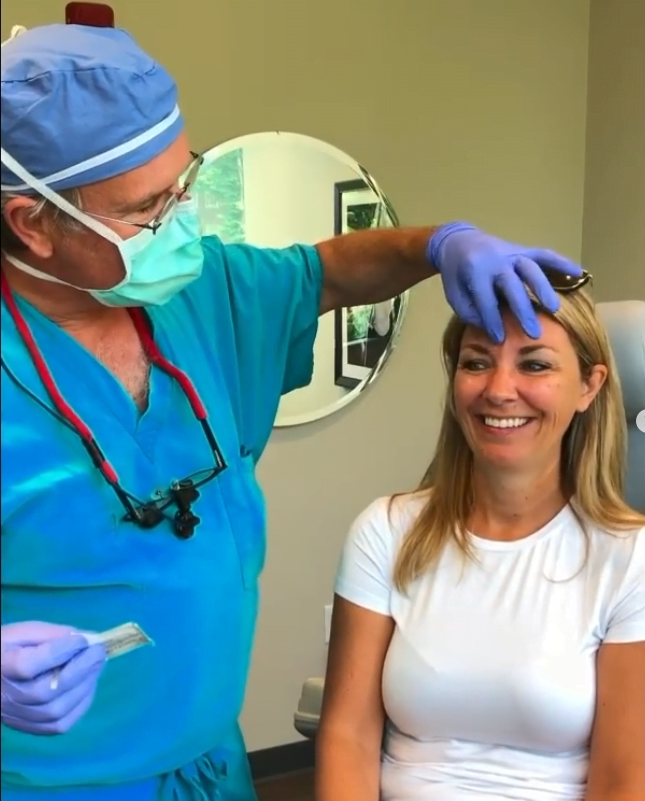
Fillers aren’t the only effective anti-aging procedure
If you want to fight aging without surgery, you have many safe, effective options beyond dermal filler. Botox, a neuromodulator rather than a filler, is the #1 injectable of all time for good reason—its effects are predictable, and in the hands of a skilled injector, it can deliver amazing anti-aging results in the upper face. Dysport and Daxxify are two Botox alternatives that work to address wrinkles in a similar way. In addition, at-home professional skincare and daily SPF application are the foundation of aging gracefully. We also offer many other topical skin treatments that can provide outstanding anti-aging results with regular use, including laser treatments, Morpheus8 RF microneedling, IPL photofacials, chemical peels, Hydrafacial MD, and dermaplaning.
“I had a great experience using Daxxify with Julie. My eyebrow and forehead lines have disappeared and there was a noticeable difference within 24 hours.”
—5-star Google review
Reputable injectors will encourage you to use a range of complementary anti-aging treatments, as treating not just volume loss but also dynamic wrinkles and overall skin texture is key to an ageless appearance.
The bottom line: Choose an experienced medical injector
Celebrities like Ariana Grande and Kylie Jenner bring visibility to these discussions, but it’s essential to remember that each individual’s experience with fillers will vary. Consulting with an expert injector like Dr. Claytor or Julie and getting a personalized treatment plan is crucial to achieving your desired outcome while maintaining a natural appearance.
Dr. R. Brannon Claytor is an award-winning plastic surgeon and a highly sought-after choice for both surgical and non-surgical treatments in Bryn Mawr, Main Line, and beyond.
If you are looking for a trusted aesthetic medical team in the Philadelphia area, call us at 610-527-4833 to schedule a consultation!

One of the most tell-tale signs of aging and weight fluctuations are “bat wings”— extra skin and fat that hangs off the upper arms. Bat wings can affect women and men of all shapes and sizes, but can’t be corrected with exercise and diet alone. While the most effective way to get rid of them is with arm lift surgery, those considering the procedure often ask if its results will be permanent. Below, Philadephia arm lift surgeon Dr. R. Brannon Claytor answers this common question and provides suggestions for how to maintain your arm lift results.
What is an arm lift?
An arm lift, clinically referred to as brachioplasty, is a body lifting procedure that removes excess tissues and tightens loose skin & muscle on the upper arms between the elbow and shoulder. It is often combined with liposuction to remove stubborn fat deposits, further slimming the arms. After loose tissues are removed, the skin on the arms is then tightened and sutured, helping the arms look more toned and contoured.
With a 94% patient satisfaction rating, arm lift surgery has been labeled one of RealSelf’s “Most Worth It” procedures for the past 4 years. Patients often report feeling more confident, attractive, and confident after the procedure.
Arm lift surgery has a 94% patient satisfaction rating, making it one of the most ‘Worth It’ procedures.
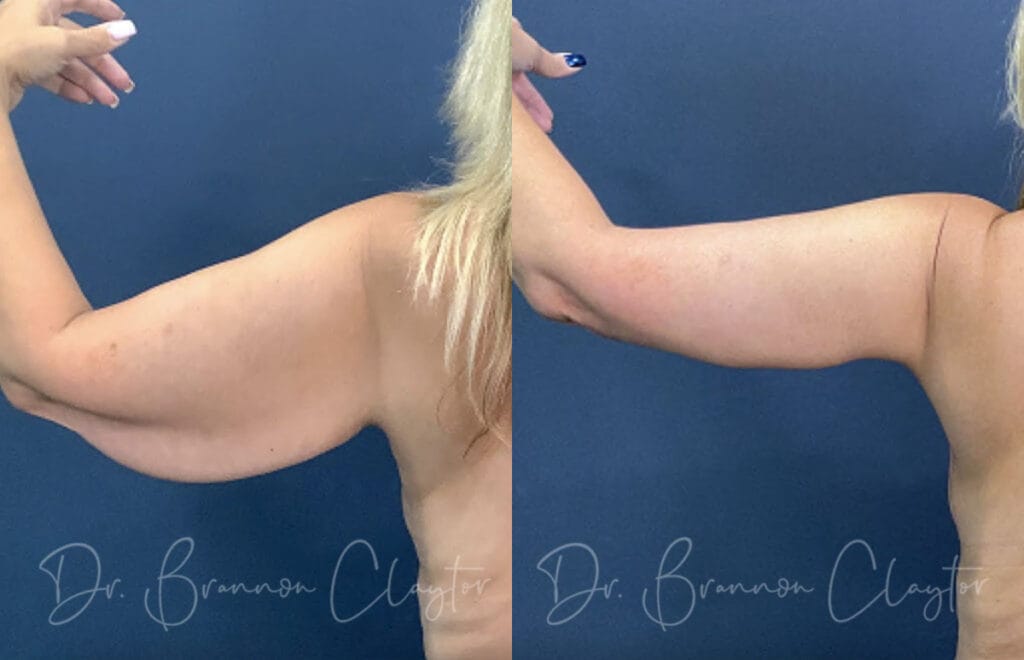
Laser-assisted liposuction presents a less-invasive arm lift option
Laser-assisted liposuction, also called SmartLipo®, can be a less-invasive alternative to traditional arm lift surgery. Instead of surgically removing excess tissues following your liposuction procedure, SmartLipo applies thermal energy beneath the skin while suctioning away fat. This thermal energy stimulates new collagen growth, resulting in a 57% increase in tissue tightening over traditional liposuction.
Laser-assisted lipo offers a few more benefits over traditional lipo, including:
- Quicker and more comfortable recovery
- Full results are typically seen after 3-4 weeks (compared to 1-3 months)
- Only requires local anesthesia
You can learn more about SmartLipo and find out if you’re a good candidate for the procedure during a personal consultation with Philadelphia plastic surgeon Dr. Claytor.
How long will my arm lift results last?
Arm lift results can last for a decade or more, assuming you maintain a stable weight and healthy lifestyle. Additionally, because some skin and fat are permanently removed with the procedure, your arms will always look tauter than they would have without an arm lift. However, sagging will naturally continue with age and any weight fluctuations, therefore it’s normal for your initial results to fade somewhat over time. If additional sagging or fat accumulation is treated while it is still fairly mild, a non-surgical body contouring treatment may be adequate for future touch-ups.
How can I maintain my arm lift results?
While your arm lift results may not last forever, there are a few ways you can help extend them:
Adhere to a healthy diet & exercise routine
Diet: A healthy diet supports skin elasticity and collagen production—important factors when it comes to maintaining toned arms. Furthermore, being thoughtful about what you eat can help you maintain a steady weight, which is key to retaining plastic surgery results. We suggest the following timeless guidelines: avoid processed foods, consume alcohol only in moderation, eat a whole-foods based diet, and drink plenty of water.
Exercise: In addition to diet, exercise is key to maintaining beautiful arm lift results. While you’ll want to avoid strenuous activity (especially in your arms) for the first 6 weeks after your surgery, you should develop a regular fitness routine that includes both cardio and strength training exercises to help you keep weight off and tone your arms. (Tricep extensions and dips are some of our favorites.)
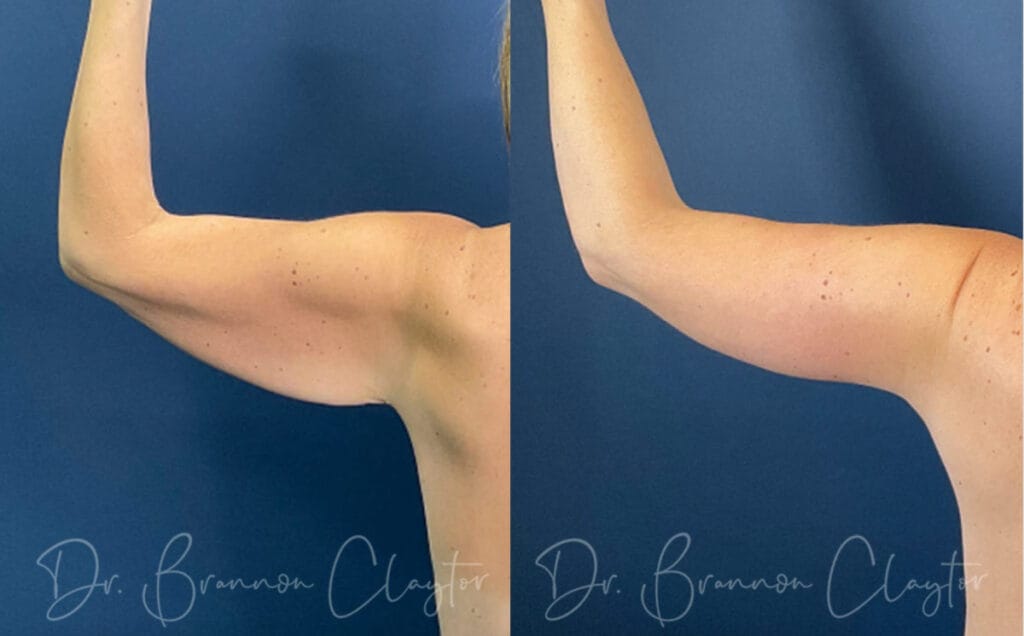
Follow proper scar aftercare steps
After your arm lift surgery, you will have a scar running between your elbow and shoulder on each arm. These scars will fade on their own over time, but you can help reduce their appearance even further by following these aftercare tips:
- Avoid nicotine products, including tobacco, vaping, and Nicorette®
- Use a medical-grade, silicone-based scar cream, such as Biocorneum®
- Avoid sun exposure and always use a high-SPF sunscreen, such as Alastin® Skincare’s HydraTint Pro Broad Spectrum SPF 36
- Sleep with your arms elevated for the first two weeks after your surgery to reduce swelling
If you have taken these steps and are still unsatisfied with your arm lift scars, fractional laser skin resurfacing may be able to help further lighten and fade scars by encouraging cell turnover.
Following your surgeon’s aftercare instructions can minimize scarring and extend your arm lift results.
Wear compression garments
You will need to wear compression garments on both arms for 3-6 weeks following your arm lift surgery. These garments will help minimize swelling and scarring, and help your arms adapt to their new contour.
Choose a board certified plastic surgeon
Beautiful arm lift results begin with choosing a board certified plastic surgeon for your procedure. A common mistake underqualified surgeons make is not leaving enough skin to properly close the arm lift incision; this can place excess tension on the incision, leaving behind thin, stretched skin. An underqualified surgeon may also leave you with tighter skin on one arm than the other.
An experienced, board certified plastic surgeon will take great care when making your incisions in order to minimize scarring and create proportional, symmetric results. He or she will also guide you to the most effective medical-grade scar care and provide detailed pre- and post-op instructions to help you achieve the best possible outcome.
Board certified plastic surgeon Dr. Claytor performs arm lift surgery under local anesthesia in his on-site Quad-A-accredited surgical facility, or as an outpatient procedure at Bryn Mawr Hospital or the Surgery Center of the Main Line. To reduce visible scarring, he hides arm lift scars within the armpit area so that they are not visible from the front or back when the arms are down.
Dr. R. Brannon Claytor
Dr. Claytor is board certified by the American Board of Plastic Surgery and holds over 20 years of experience as a cosmetic plastic surgeon. An innovator and teacher in the field of plastic surgery, he uses advanced techniques like the drain-free tummy tuck and deep plane facelift to streamline recovery and provide natural-looking, durable results.




Do I need an arm lift?
While no one needs an arm lift (it is an elective procedure), you may be a good candidate if:
- You have had weight loss (bariatric) surgery
- You have loose, sagging skin on your arms that you feel detracts from your overall appearance
- You are a non-smoker with no serious medical conditions
- You are at or near your target weight and have a BMI under 30
- You understand that the procedure will leave a scar
View this post on Instagram
Interested in arm lift surgery? Contact Main Line plastic surgeon Dr. Claytor.
Board certified plastic surgeon Dr. R. Brannon Claytor has helped patients from Philadelphia, Main Line, Bryn Mawr, and surrounding areas slim and tone their arms for over 20 years. According to one of Dr. Claytor’s arm lift patients on RealPatientRatings.com, “The results were beyond my expectations. Dr. Claytor treated me with respect and was attentive. The staff is top-notch.” Schedule your consultation with Dr. Claytor online or call (610) 527-4833.
Areas Served:
Philadelphia Plastic Surgeon Dr. Brannon Claytor Recognized as a Top Medical Professional in USA Today’s 2024 Watch List
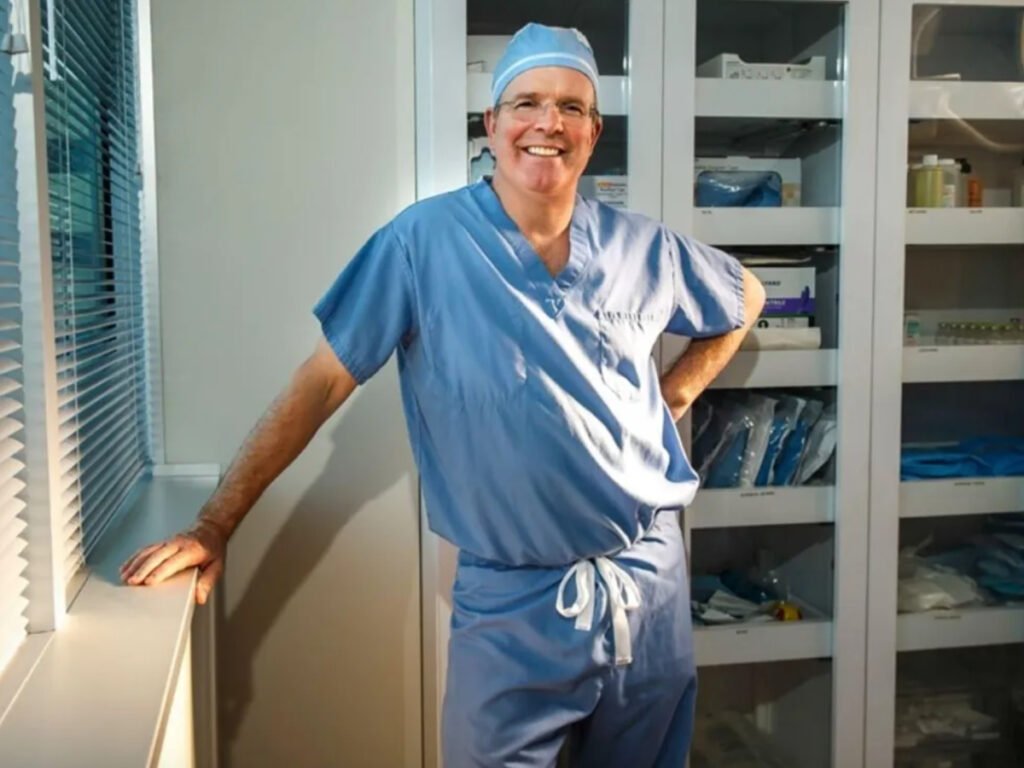
Philadelphia, PA /Press Advantage/—Dr. Brannon Claytor, a board-certified plastic surgeon at Claytor Noone Plastic Surgery, has been featured in USA Today’s prestigious list of “Top Medical Professionals to Look Out For in 2024.” This acknowledgement underscores Dr. Claytor’s commitment to ideal patient outcomes and his use and advancement of innovative plastic surgery techniques.
“Our team is dedicated to achieving optimal results that look remarkably natural and streamlining recovery,” said Dr. Claytor. “Being honored by USA Today is a testament to our commitment to medical excellence as well as serving our patients.”
Dr. Claytor is an award-winning plastic surgeon and one of the top cosmetic surgeons in Philadelphia, PA. He is well-known in Bryn Mawr and the Philadelphia Main Line area, and nationally known for his expertise in deep plane facelift technique to achieve natural looking, yet transformative, facial anti-aging results. Equally noteworthy is his innovative drain-free tummy tuck technique for improved plastic surgery recovery. Dr. Claytor’s inclusion in USA Today’s list of top doctors highlights his many contributions, such as these, to the field of plastic surgery. Still, Dr. Claytor himself is most energized by his impact on patients’ lives.
“Each day at my practice, I see patients’ lives transformed by procedures like deep plane facelifts and drain-free tummy tucks,” Dr. Claytor commented. “While any recognition is an honor, the joy my patients express at their follow-up appointments will always be the best reward.”
This recognition follows closely behind several other presentations, awards, and publications in national plastic surgery journals. Dr. Claytor presented his research and techniques at five national and international plastic surgery conferences in fall of 2023, including meetings of the American Society of Plastic Surgeons (ASPS), The Aesthetic Society, and the American Academy of Facial Plastic & Reconstructive Surgery (AAFPRS); he won “Best Paper” from the medical journal Plastic and Reconstructive Surgery for a paper on postoperative scar care with microneedling; and he continues to be named a “Top Doctor” by Philadelphia Magazine and Main Line Today each year.
About Dr. Brannon Claytor: Dr. R. Brannon Claytor is board-certified by the American Board of Plastic Surgery and a board member of The Aesthetic Society. With over 20 years of experience as a plastic surgeon, he serves as Chief of Plastic Surgery for Main Line Health. Dr. Claytor’s warmth and attention to his patients’ needs make him one of the Philadelphia area’s favorite plastic surgeons. His knowledge of and continual training in the most advanced surgical techniques provide his patients with up-to-date, cutting-edge care that yields exceptional results. After obtaining his medical degree at Jefferson Medical College, Dr. Claytor completed a Plastic Surgery Fellowship at the University of Massachusetts Medical School, followed by a Hand and Microsurgery Fellowship at the prestigious Washington University School of Medicine in St. Louis. After ten years in private practice in New England, Dr. Claytor, a Philadelphia-area native, joined Dr. R. Barrett Noone in 2014 to carry on the tradition of exemplary plastic surgery on the Main Line. Dr. Claytor’s practice, Claytor Noone Plastic Surgery, is located at 135 S Bryn Mawr Ave Suite 300, Bryn Mawr, PA 19010 on the Philadelphia Main Line. For more information about Dr. Claytor and Claytor Noone Plastic Surgery, visit https://www.cnplasticsurgery.com/ or contact the office directly at (610) 527-4833.

Combining treatments to maximize results has become a standard practice at our Philadelphia med spa. A recent study spotlighted a duo that’s setting new benchmarks for skin rejuvenation: Botox and chemical peels. Below, we explain how these treatments work on their own, their synergistic benefits, and the results of the study.
Botox: Precision in relaxing expression lines
Botox®, and other brands of neuromodulators, use a purified form of botulinum toxin to temporarily paralyze facial muscles that cause dynamic wrinkles, which are lines that appear as a result of facial expressions like smiling, frowning, or squinting.
During a Botox treatment, our injectors use very fine needles to inject the neurotoxin directly into the muscles that help form these expressions, softening the impact these movements have and thus smoothing the skin in treated areas.
The procedure is highly nuanced; our injectors carefully select the specific muscles that contract with your expressions and often treat corresponding areas to maintain a natural appearance.
Our Bryn Mawr Med Spa offers premium Botox-type injectables, including Daxxify™, Dysport®, and Xeomin®.
Chemical peels: Revitalizing the skin’s surface
Chemical peels use a specialized chemical solution that, when applied to the skin, deeply exfoliates away the dull, dead layers to reveal healthier, smoother skin beneath. These treatments reduce the appearance of dynamic and static lines, help even out skin tone and texture, improve the appearance of large pores, and boost collagen and elastin production to enhance skin health. Peels range in intensity from superficial to deep, depending on the chemical solution used and the skin’s needs.
“Doctor Claytor is absolutely amazing. I can’t say enough wonderful things about him and his entire team!”
—5-star Google review
The benefits of combining Botox and chemical peels
When Botox and chemical peels are used in conjunction, they address a broad spectrum of skin concerns, from the underlying muscle activity contributing to dynamic wrinkles to the surface-level static irregularities like skin texture and tone. The combination creates a more youthful and refreshed appearance that neither treatment could achieve alone.
Additionally, the effects of Botox can potentially be extended when paired with a customized chemical peel, as improving the skin’s overall quality with increased collagen and elastin production helps to soften or erase existing lines and help delay future concerns from forming.
Results of the new study
The January 2024 study, published in the Journal of Drugs in Dermatology, observed participants aged 30 to 70 with varying skin types who received a chemical peel followed immediately by Botox injections. Here is an overview of the participants’ results 30 days after treatment:
- 60% improvement in wrinkle severity
- 59% improvement in pigmentation uniformity
- 70% improvement in skin tone concerns
Of those who participated in the study, 96% expressed their willingness to undergo the treatment again, with 100% of patients noting an improvement in their skin’s appearance.
What does this mean for you?
For anyone seeking a non-surgical, yet comprehensive approach to rejuvenate their skin, this study confirms the safety and efficacy of combining Botox and chemical peels. No additional side effects from pairing these treatments were found during this study.
Why choose our plastic surgery center for your medspa treatmentsWhile the study’s results are promising, the key to success lies in selecting the right professionals for your aesthetic needs. Our Bryn Mawr Med Spa is overseen by Dr. Brannon Claytor, one of the top aesthetic surgeons Philadelphia, who also performs injectable treatments alongside our Physician Assistant, Julie Holesh. Patients in Bryn Mawr, Main Line, and surrounding Philadelphia areas appreciate that their injectable treatments and many other non-surgical procedures are performed by practitioners with the highest levels of education and training in facial musculature and skin anatomy.
In addition to our premier injectable providers, our medical esthetician, Shannon, has nearly 20 years of experience in personalized medical spa treatments, including chemical peels, to address superficial and deeper skin imperfections.
Ready to transform your skin?To learn if this innovative treatment duo is right for you and your skin, please call our Philadelphia Med Spa at Claytor Noone Plastic Surgery by calling (610) 527-4833—or, schedule a consultation online using the link at the top of this page!
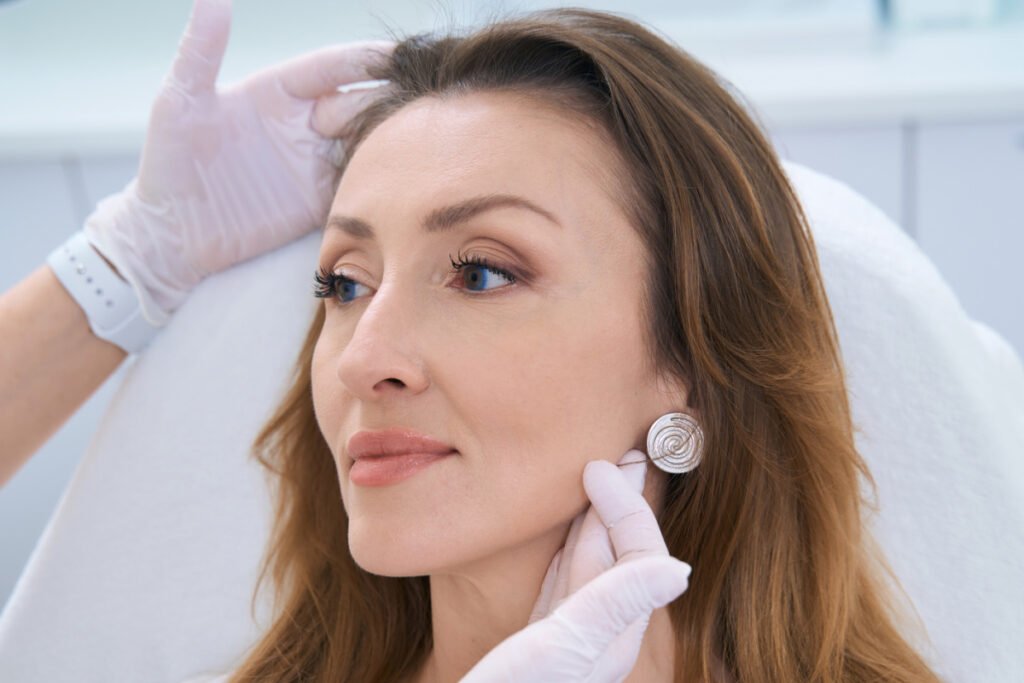
Sometimes one needs a little help to feel as vibrant on the outside as the inside. In this insightful Q&A session with Dr. Claytor, you’ll learn the ins and outs of facelifts and discover the steps to take toward a more confident you.
How do I know when I need a facelift?
Let’s face it; no one needs a facelift. The more important question is why do men and women reach a point where they are considering facial rejuvenation? It’s a conundrum. The years tick by, but in our hearts, we still feel youthful exuberance with just – perhaps – a touch more wisdom than we had twenty or thirty years ago. Truthfully, women seem to bear the pressure of aging more deeply than most men. And ageism can be felt in the workplace and dating. Many people in their 60’s and 70’s wish to or need to continue working and find themselves competing against a youthful workforce. Several have spoken about finding themselves “sidelined” or are asked when they might be retiring. The increased use of “Zoom” meetings and selfies has made people of all ages more self-critical, but for many who have begun to see the effects of time, gravity and sun damage, the self-criticism can build to a loss of confidence. That moment when you look in the mirror and the reflection doesn’t reflect who you feel inside is often the moment that patients pick up the phone to schedule a consultation. The art of aging gracefully does not necessarily require the foregone conclusion of wrinkles, jowls and sagging neck.
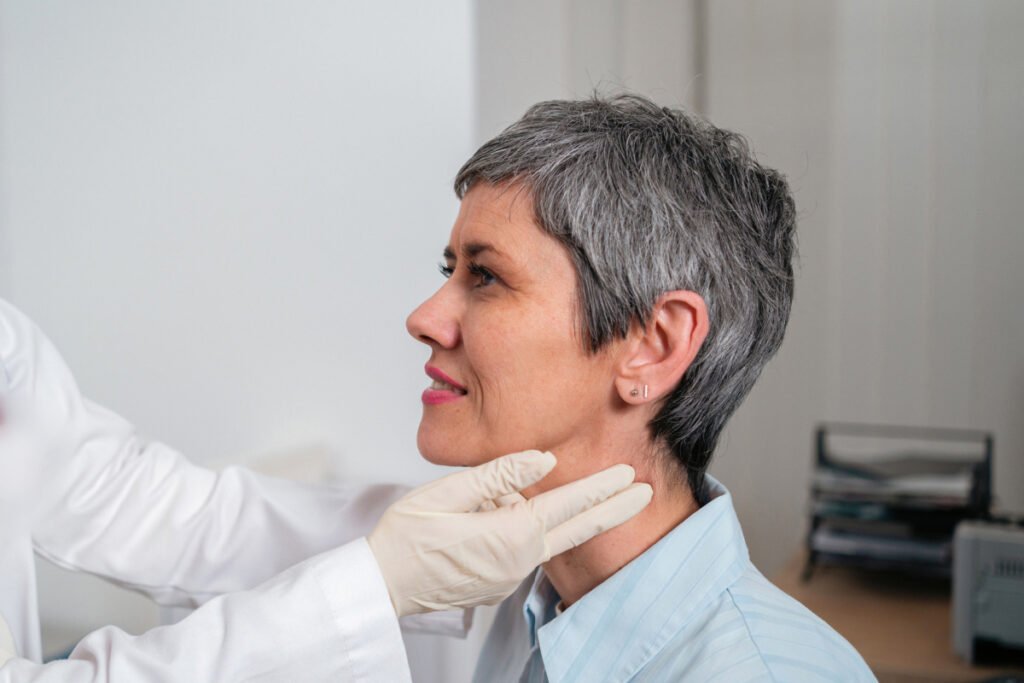
How long does a facelift usually last? Is it a permanent procedure?
Unlike threads, a deep plane facelift provides a long-lasting result. While each patient is unique, most patients feel they have turned back the clock 10-20 years. One must remember, of course, that you will, of course, continue to age. You just set the clock back on the aging process.
Will my facelift scars be visible?
Dr. Claytor positions the scars within the fold of the ear, behind the ear and in the hairline so as to be as invisible as possible.
There are a few options to choose from when it comes to facelifts. How will I know what type of facelift procedure is right for me?
That’s a great question. Some patients come in concerned only about their neck. If they are young and have a thick or heavy neck, we can often address this with liposuction and a minimally invasive MyEllevate procedure. If the patient has loose or crepe skin (eg: turkey neck), they have excess skin, and this can only be addressed by removing and lifting the skin and addressing the underlying musculature of the neck. A neck lift can address the neck and the lower face, but it will not address the mid face. The deep plane facelift addresses the neck, lower face and midface, and provides a comprehensive rejuvenated result.
How long does it take to recover from a facelift?
You should give yourself two weeks to recover from a deep plane facelift. While the bruising is typically fairly minimal, you will experience some swelling, and you will want to make sure you stay well hydrated and rested while you are recovering.
Are there any non-surgical options that can achieve facelift-like results?
There is a multi-billion dollar industry that insists that facial rejuvenation can be achieved without surgery. There are lasers that are incredibly effective at improving skin tone and texture, and there are some treatments that can even help with skin tightening. Fillers (like Juvéderm, Restylane and Sculptra) and toxins (like Botox, Dysport and Daxxify) can help for a time. Patients come to me when they have tried these treatments and still have the same facial aging concerns they started with. The deep plane facelift is the holy grail of facial rejuvenation.
Learn more about facelifts with Dr. ClaytorThe journey to a more confident you begins with informed decision making. Learn more about facelifts by reading the blog posts below from our plastic surgeon Philadelphia:


